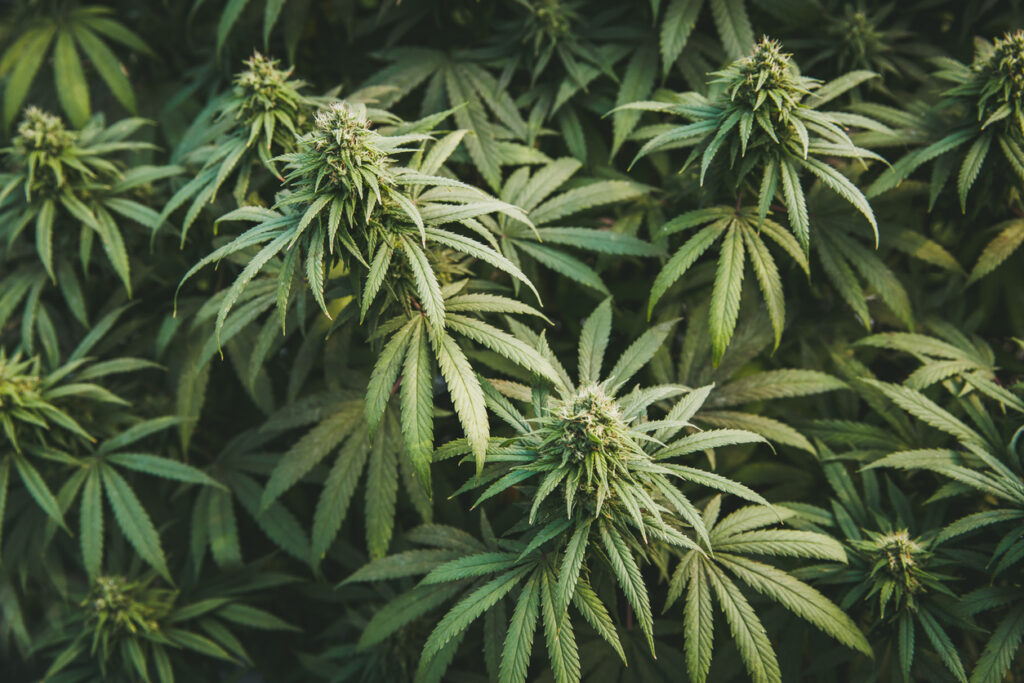Fate had a different plan for him, however. Professor Mechoulam tasked him with a seemingly impossible mission: to discover a molecule in the brain that binds to cannabinoid receptors.
Hanuš thought this task commensurate to finding a needle in the proverbial haystack, but he pressed on. Prior research by Mechoulam had isolated THC, the psychoactive compound in marijuana, and another team member, William Devane, had identified cannabinoid receptors in the brain. Considering the vast evolutionary divergence between plants and animals, Mechoulam wondered why a plant-derived molecule like THC had an impact on humans.
 The answer lay in the lock-and-key model of neurotransmitters. If THC could fit the molecular “lock” in brain synapses, then the brain must produce a similar molecule with an identical chemical structure.
The answer lay in the lock-and-key model of neurotransmitters. If THC could fit the molecular “lock” in brain synapses, then the brain must produce a similar molecule with an identical chemical structure.
On March 24, 1992, Hanuš and Devane discovered the needle in the haystack—the first-known cannabinoid molecule in the human brain. They named it anandamide, derived from the Sanskrit word ananda, meaning “joy” or “bliss.”
This discovery revolutionized neuroscience, revealing that the brain generates molecules nearly indistinguishable from psychotropic drugs. These molecules operate through the same molecular delivery systems as marijuana and other substances that alter mood.
It became evident that external substances, like THC, produce elevated emotional states because of their similarity to endogenous chemicals, such as anandamide. The latter, along with similar neurotransmitters, came to be known as endocannabinoids, as they are naturally produced within the body.
Notably, various mood-altering drugs mimic the actions of other endogenous neurotransmitters. Psilocybin in “magic mushrooms” resembles serotonin, cocaine imitates dopamine, alcohol engages GABA and glutamate, morphine mirrors endorphins, and Xanax affects GABA, among others. These exogenous chemicals fit molecular locks in the brain, just like their endogenous counterparts.
 As the brains of mystics are flooded with high doses of potent endogenous pleasure drugs, researchers are currently studying their brain function in exploring how deep meditation can stimulate the production of anandamide, serotonin, dopamine, and other pleasure-inducing neurochemicals.
As the brains of mystics are flooded with high doses of potent endogenous pleasure drugs, researchers are currently studying their brain function in exploring how deep meditation can stimulate the production of anandamide, serotonin, dopamine, and other pleasure-inducing neurochemicals.
The ecstatic states described by saints, where consciousness unites with the universe, are not mere metaphors but molecular realities.
I call the ecstatic state “Bliss Brain.” In recent years, I have dedicated myself to refining techniques for inducing this state, authoring a book and conducting workshops to share these transformative practices.
Astonishing testimonies have emerged, such as Martin’s experience with swirls of white light and intricate fractal patterns during his initial encounter with these techniques. The mild hallucinations he witnessed are common with endogenous psilocybin (serotonin) and have historically shaped visionary encounters with sages.
The health benefits of endocannabinoids are manifold, ranging from decreased fear, stress, and anxiety to increased optimism, concentration, cognitive function, and mood. These remarkable findings convey a powerful message: your brain has the innate ability to produce the most pleasurable neurochemicals.
You don’t require external substances to lead a life of joy. Within the pharmacopeia of your own mind lies the key to Bliss Brain. Embrace a daily practice, and happiness will become your steadfast companion.




